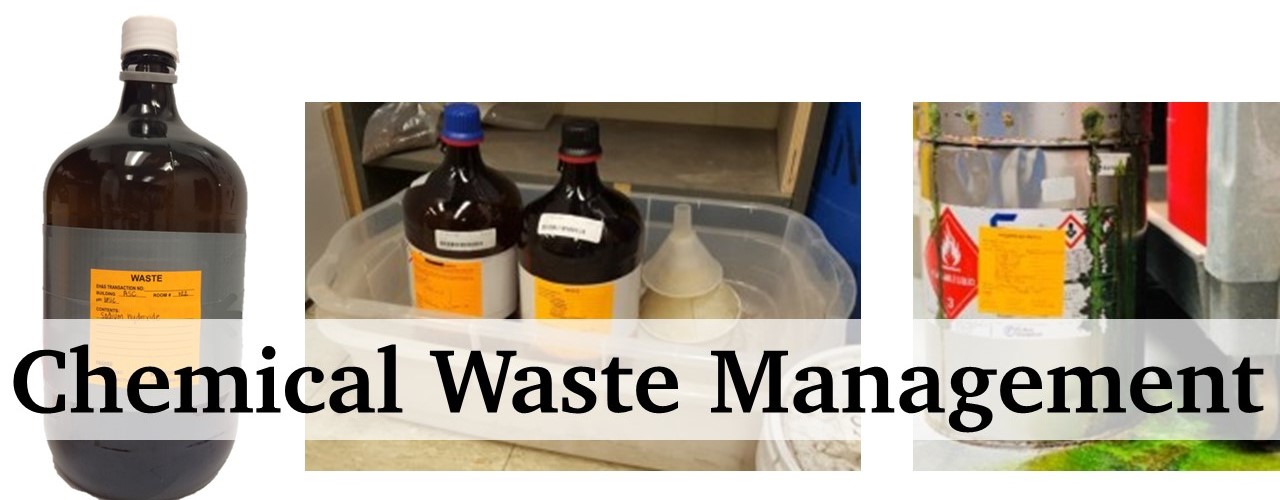
Chemical waste management practices are overseen by the Environmental Protection Agency and Texas Commission on Environmental Quality. Each generator of hazardous chemical waste is required to perform a Waste Determination, maintain a clean and appropriate Satellite Accumulation Area, segregate waste streams properly and submit pick up requests regularly.
Chemical waste must be disposed of through EHS but work area personnel have many responsibilities to manage waste safely to prevent accidents.
Every work area is required to complete a Waste Determination for each work area procedure that produces a waste, meaning a single lab can have several Waste Determinations.
A Waste Determination identifies the components and hazard characteristics (i.e., corrosive, toxic, flammable or reactive) of a given waste stream and determines the appropriate type and size of container to use for waste generation. Completing the Waste Determination Form will also allow for EHS to identify P-Listed waste streams for proper Satellite Accumulation Area management. EHS has created a standardized form and instruction page to help personnel with the Determination process.
Satellite Accumulation Areas, or SAAs, is any area at or near any point of generation where hazardous waste initially accumulates and that is under the control of the operator of the process generating the waste. Certain guidelines for SAAs must be followed.
- No more than 55 gallons of hazardous waste and/or one quart of
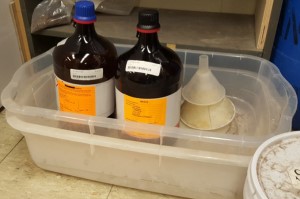 acutely hazardous (e.g., sodium azide) may be accumulated at any one time (CHP A19.4.4).
acutely hazardous (e.g., sodium azide) may be accumulated at any one time (CHP A19.4.4). - Locate your SAA near the point of waste generation.
- If your SAA is located on the floor, place your containers in secondary containment to collect spills. The only exception to this is large drums.
- SAA rules are overseen by the Environmental Protection Agency and the Texas Commission on Environmental Quality. These agencies do inspect work areas on campus at least annually and have cited violations to the regulations.
- If repurposing a manufacturer chemical container for waste
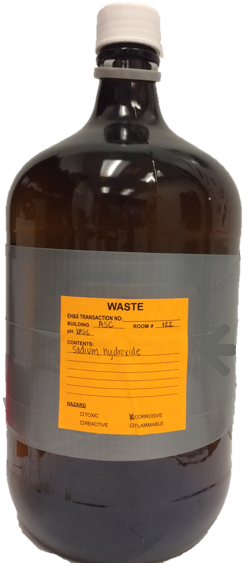 collection, triple-rinse the container with an appropriate solvent collecting each
rinse as waste prior to repurposing and completely cover the original label with duct tape, paper or spray.
collection, triple-rinse the container with an appropriate solvent collecting each
rinse as waste prior to repurposing and completely cover the original label with duct tape, paper or spray.
- Remove the yellow EHS barcode and affix it to a Barcode Return Form to keep your inventory current.
- Affix an orange Waste label upon first addition of waste to the container. Write the full name of every chemical added to the container; abbreviations are not acceptable. For example, write "sodium hydroxide", not NaOH.
- Waste containers must be kept in good condition (i.e., not leaking) and free of spills.
- If you notice a leaking container, immediately transfer to contents to a viable, non-leaking container.
- Containers must be compatible with the contents.
- Do not use metal containers to collect corrosive wastes. This is very dangerous.
- Do not use food or drink containers to collect waste.
- Use venting caps for wastes prone to gas production. Caps are available for FREE from EHS or the Chemistry Department Stockroom.
- Do not fill containers past 3/4 full or use for longer than 90 days.
- Do not put chemicals into biological waste receptacles.
- Pipet tips used for chemical transfers are not biological waste nor sharps waste; they can be collected and thrown in the regular trash.
- Certain chemical waste types cannot be mixed to ensure safety to work area and EHS
personnel. Do not mix the following waste types:
- Acid and base wastes;
- Inorganic and organic (especially nitric acid with any organic material - nitric acid
is an oxidizing acid and reacts with organic materials to produce gas).
- Several incidents at Texas Tech involved the mixing of nitric acid with organic solvents resulting in student injuries.
- Halogenated and non-halogenated wastes.
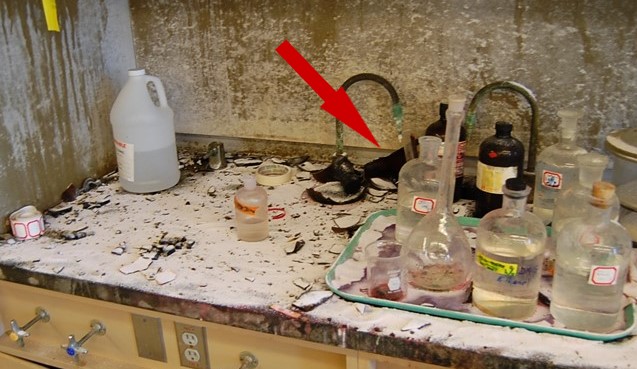
What Happens After EHS Takes My Waste?
Following the above guidelines not only protects the work area personnel but EHS personnel and the university's waste contractor as well. All containers collected on campus are bulked with like wastes for proper placarding and shipment. This is why it is so important that wastes are labeled properly and incompatibilities are not mixed. There are incidents of containers compromising during transport to the EHS Container Storage Area and to the third-party waste processing sites due to incompatible wastes being mixed.
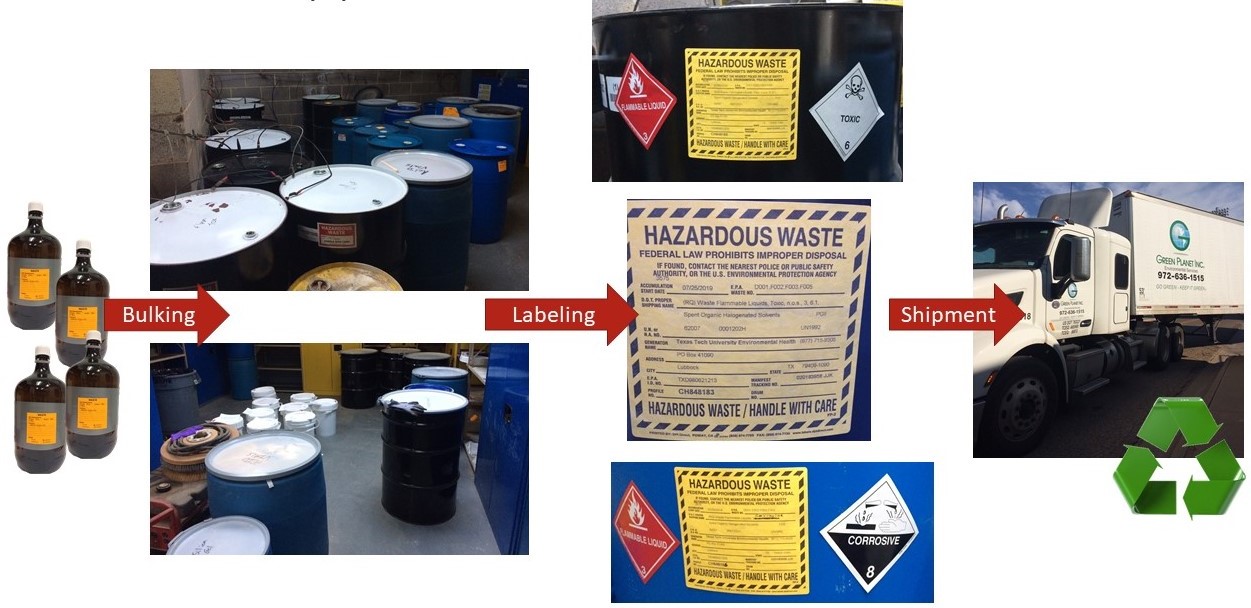
If you do ever catch a mistake that was made in waste accumulation, contact EHS immediately to remedy the situation.
Chemical Waste Resources
Waste Determination Instructions
Environmental Health & Safety
-
Address
Texas Tech University, 407 Flint Ave, Lubbock, TX 79409 (Mail Stop 1090) -
Phone
806.742.3876 -
Email
safety@ttu.edu
